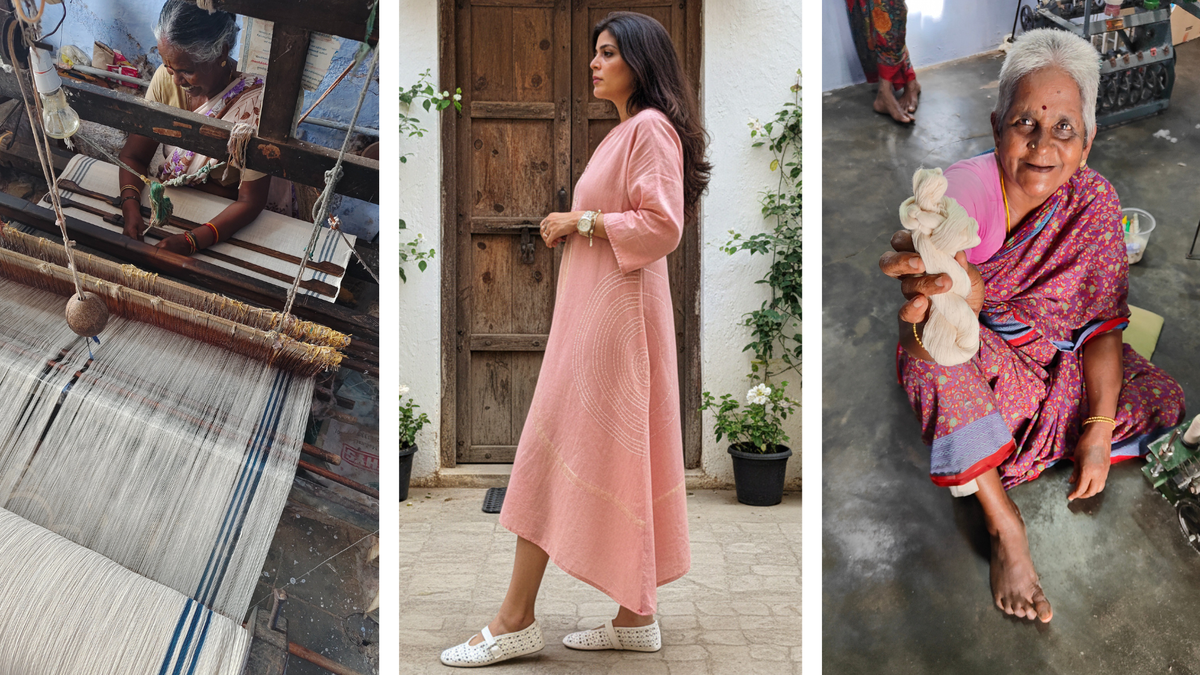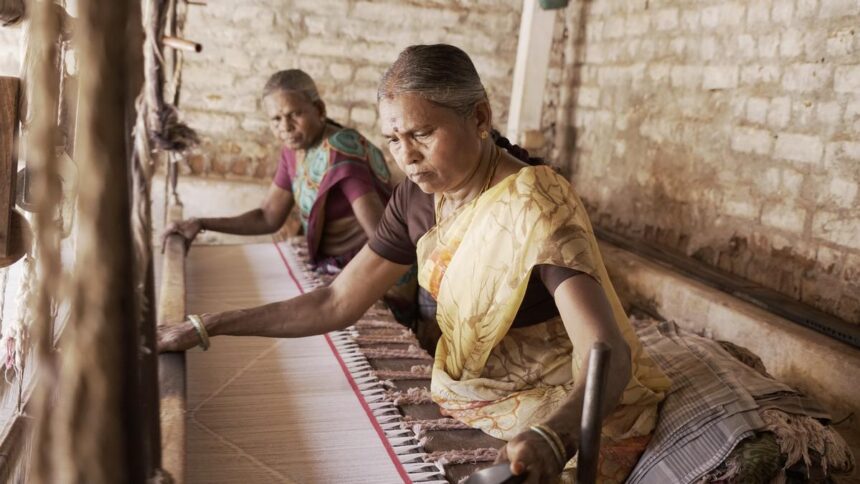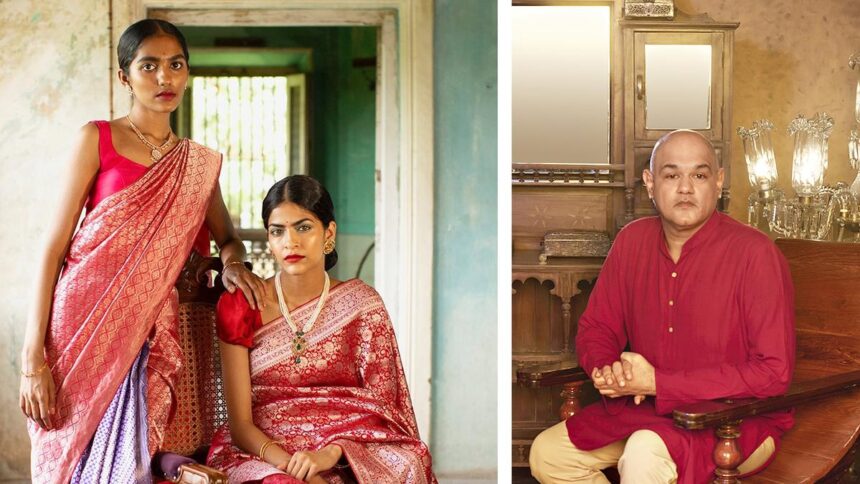Khadi is having its moment on the runway. While Indian designers such as Rajesh Pratap Singh, and Shani Himanshu of 11.11/eleven eleven have given it a contemporary spin, the handloom has also caught the fancy of international designers. Earlier this year, British designer Vivienne Westwood’s first-ever showcase at Mumbai’s Gateway of India spotlighted the textile, in addition to Chanderi and handwoven silks. In March, the Fashion Design Council of India collaborated with designer Samant Chauhan and the Centre of Excellence for Khadi to present a khadi-based womenswear collection at Moscow Fashion Week.
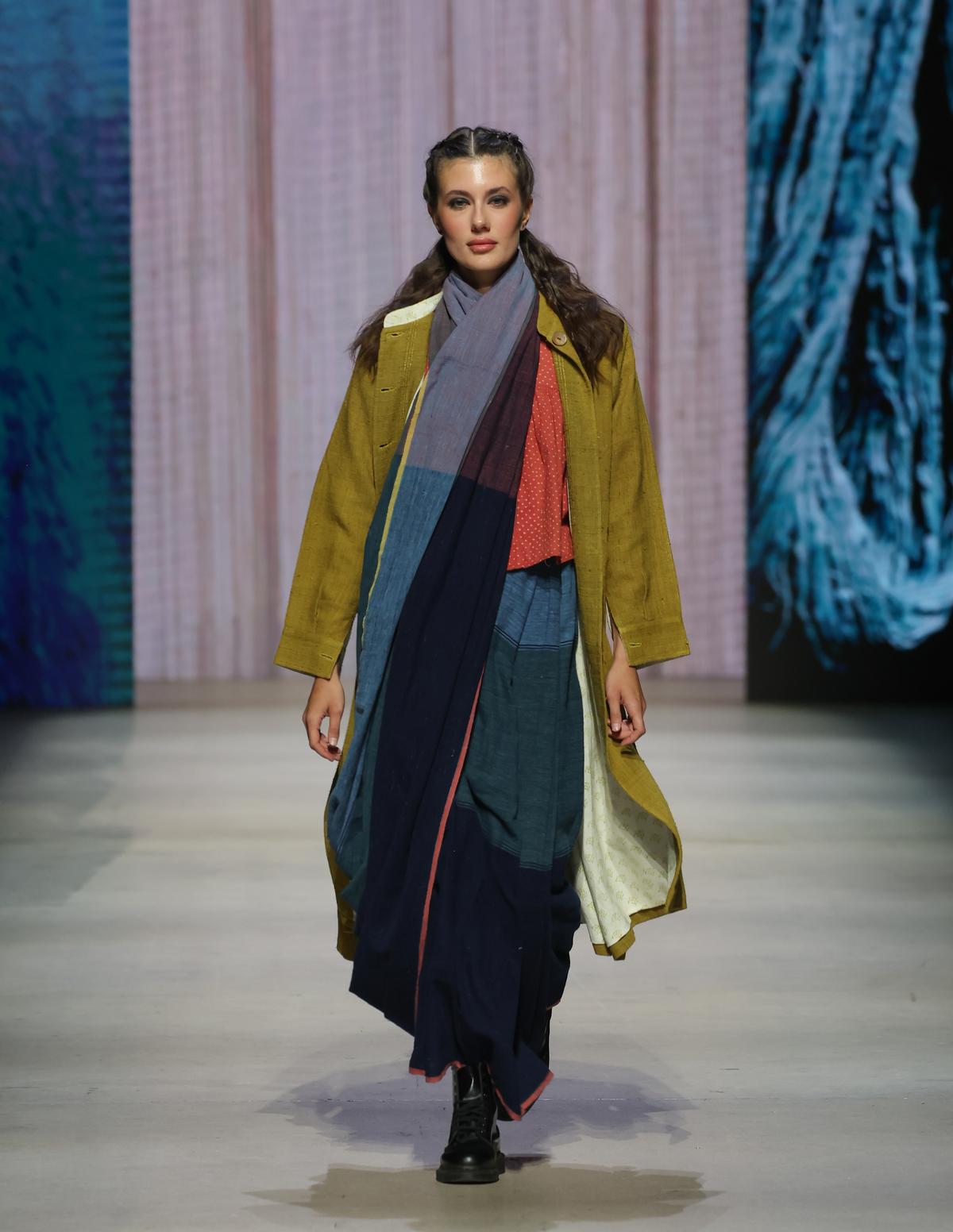
An outfit by designer Samant Chauhan
Closer home, at Dindigul in Tamil Nadu, a silent khadi revolution has been ongoing for decades — courtesy of the Gandhigram Khadi and Village Industries Public Charitable Trust, established in 1947. At the helm were T.S. Soundaram Ramachandran and G. Ramachandran, both followers of Mahatma Gandhi who wanted to promote rural development based on Gandhian ideals. While the Trust began as a community focused on health, education, sanitation, and khadi, the handloom became their core pillar.
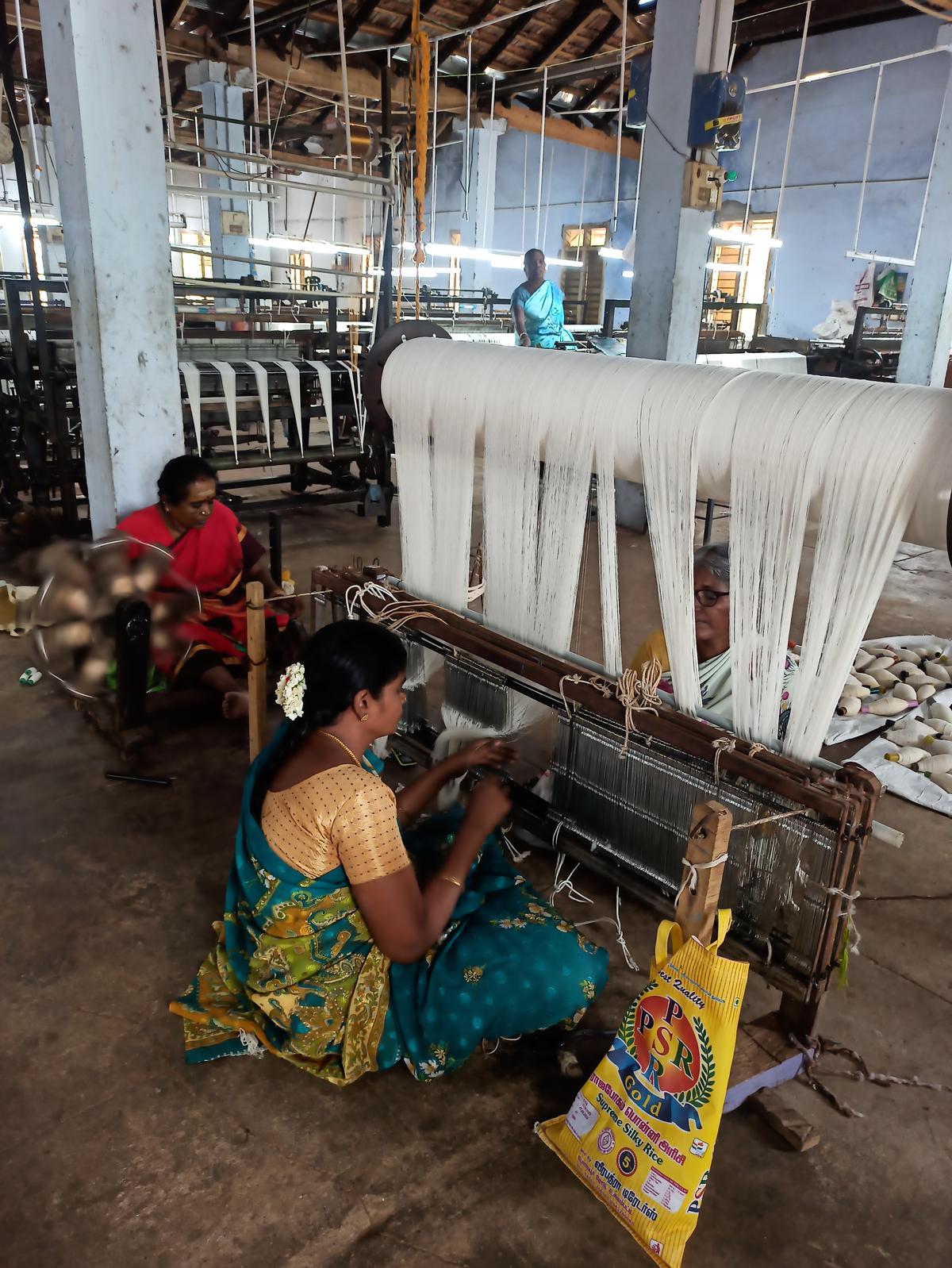
Artisans at the Gandhigram Trust
The Trust stays true to khadi’s handspun and handwoven authenticity, and keeping the fabric relevant for the current generation has been a priority. The latest step in this direction is a collaboration with Chennai-based apparel brand, Kaveri, which is known for its linen creations. The Trust’s deputy CEO Shibu Shankaran says the initiative is envisioned as the “pilot of a series of partnerships with designers and brands”.
“We see this as a way to showcase the versatility of khadi by allowing different creative voices to interpret it. Each collaboration will explore a different design language, audience, and approach,” he says. The new collection, Songs of the Spindle (₹5,000-₹8,000), features co-ord sets, dresses, kurtas, and jackets — with hand-printing, embroidery, dip dyes and shibori, and Kaveri’s signature prints and gold foiling techniques.

Designs from Songs of the Spindle


First of many collabs
Founder Kaveri Lalchand says she has known Gita Ram, chairperson of the Crafts Council of India (CCI) — and who has been associated with the Trust for over a decade as its managing trustee — for several years. So, when Ram approached Lalchand to create a collection with khadi on behalf of the Trust, she jumped at the opportunity. “When you think of khadi apparel, you picture basic shirts, kurtas, and simple outfits. We wanted to take it to the next level with our contemporary cuts, techniques, and colours.” For her colour palette, Lalchand veered away from the material’s traditional earthy finish and worked with shades such as lilac, tangerine orange, and blue.
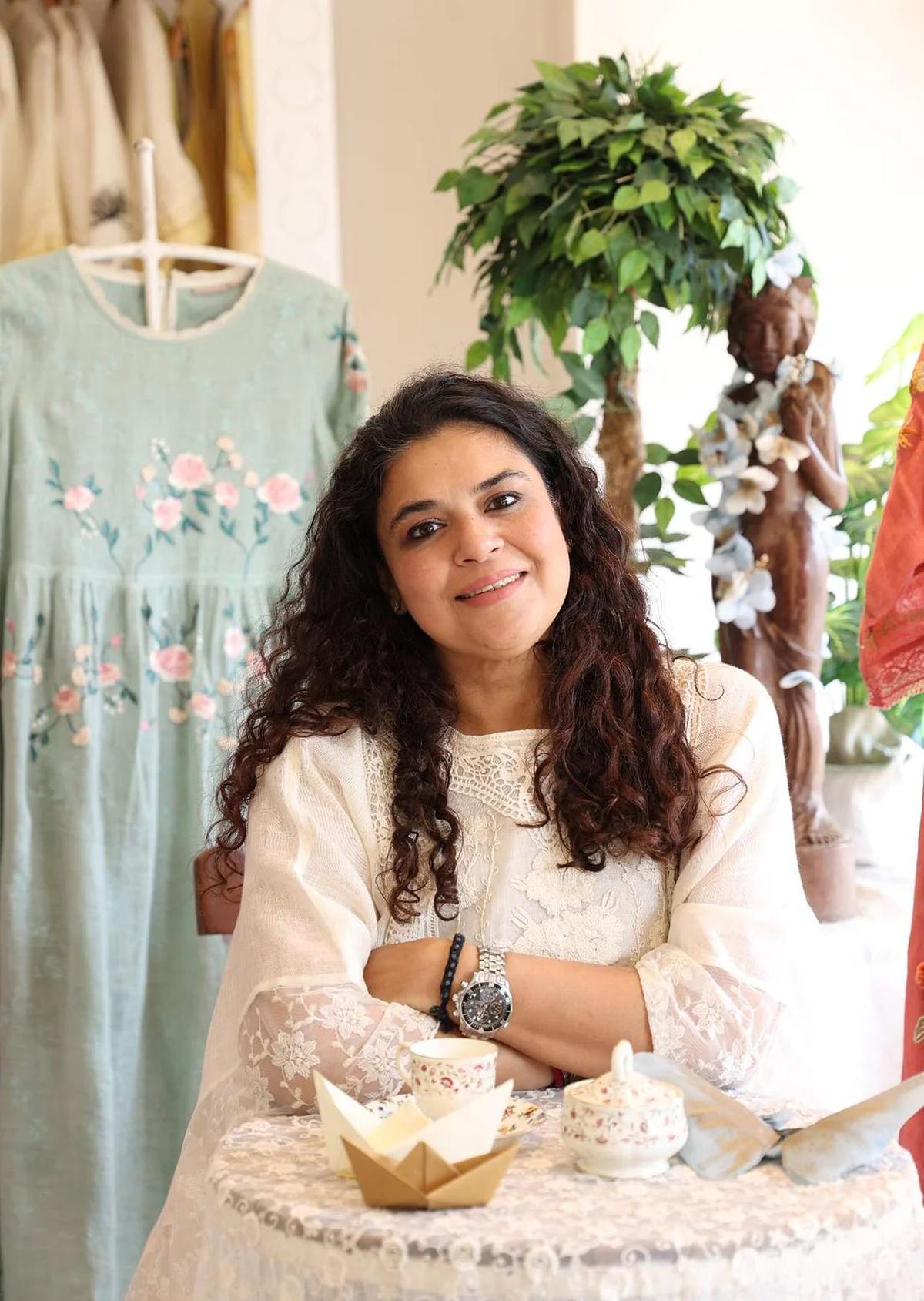
Kaveri Lalchand
Elaborating on the design approach the team took, Aditi Jain, head textile designer at Gandhigram Trust, says understanding Lalchand’s design ethos such as her preference for fluid, elegant silhouettes and subtle detailing, was key. “We then developed textiles that aligned with this vision: natural dyes in ombres, engineered placements of tie-dye motifs.”
The partnership also gave the team at Gandhigram “an opportunity to learn, refine, and tighten our own processes”, Shankaran explains, “so that we can align more effectively with the contemporary fashion world”. That learning came by way of understanding techniques that work with khadi. For instance, the team of 150 artisans explored surface treatments with natural dyes and tie-dye techniques like clamp-dyeing and stitch shibori. They have now invested in a cabinet dyeing machine for dyeing hanks of yarn, which increases their “capacity, reduces inconsistency, and frees up our artisans to explore surface treatments”. With this infrastructure in place, Jain says they are now in a much stronger position to scale up natural dye surface treatments, which they plan to make available for future collections.
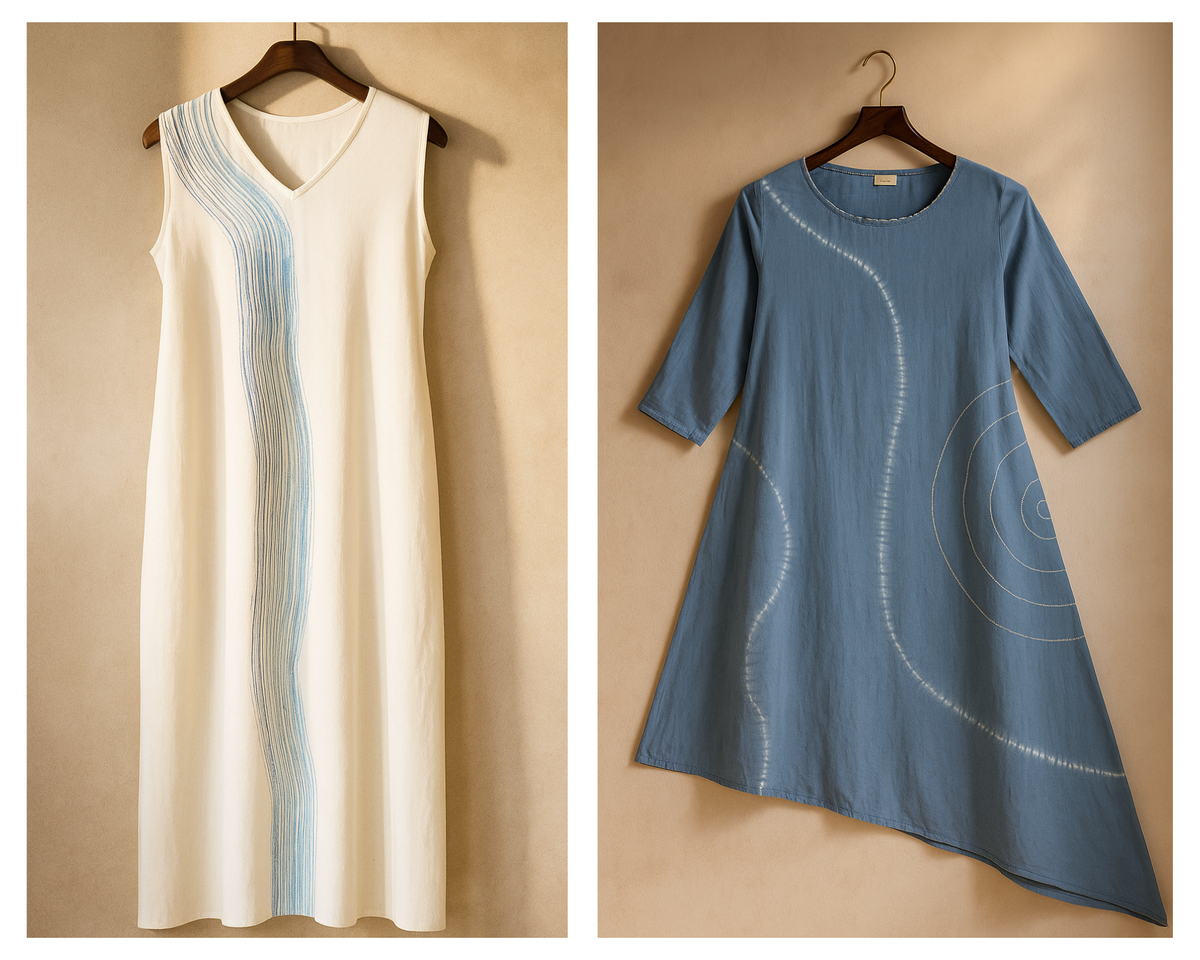
Climate-friendly wear
While many designers and boutiques already source fabrics from the Trust, this project marks a more deliberate exploration into structured, long-term collaborations with design houses. Ram of CCI says, “I was always told that khadi is a loss-making fabric. The early fervour it enjoyed post-Independence has worn off over time. We want to get khadi out of this mould.” Initiatives such as the collab with Kaveri also help boost sales, and ensure weavers remain employed. “It’s important to keep our weavers happy, so they are encouraged to continue working on the art form,” says Ram. “Such partnerships are the way forward.”
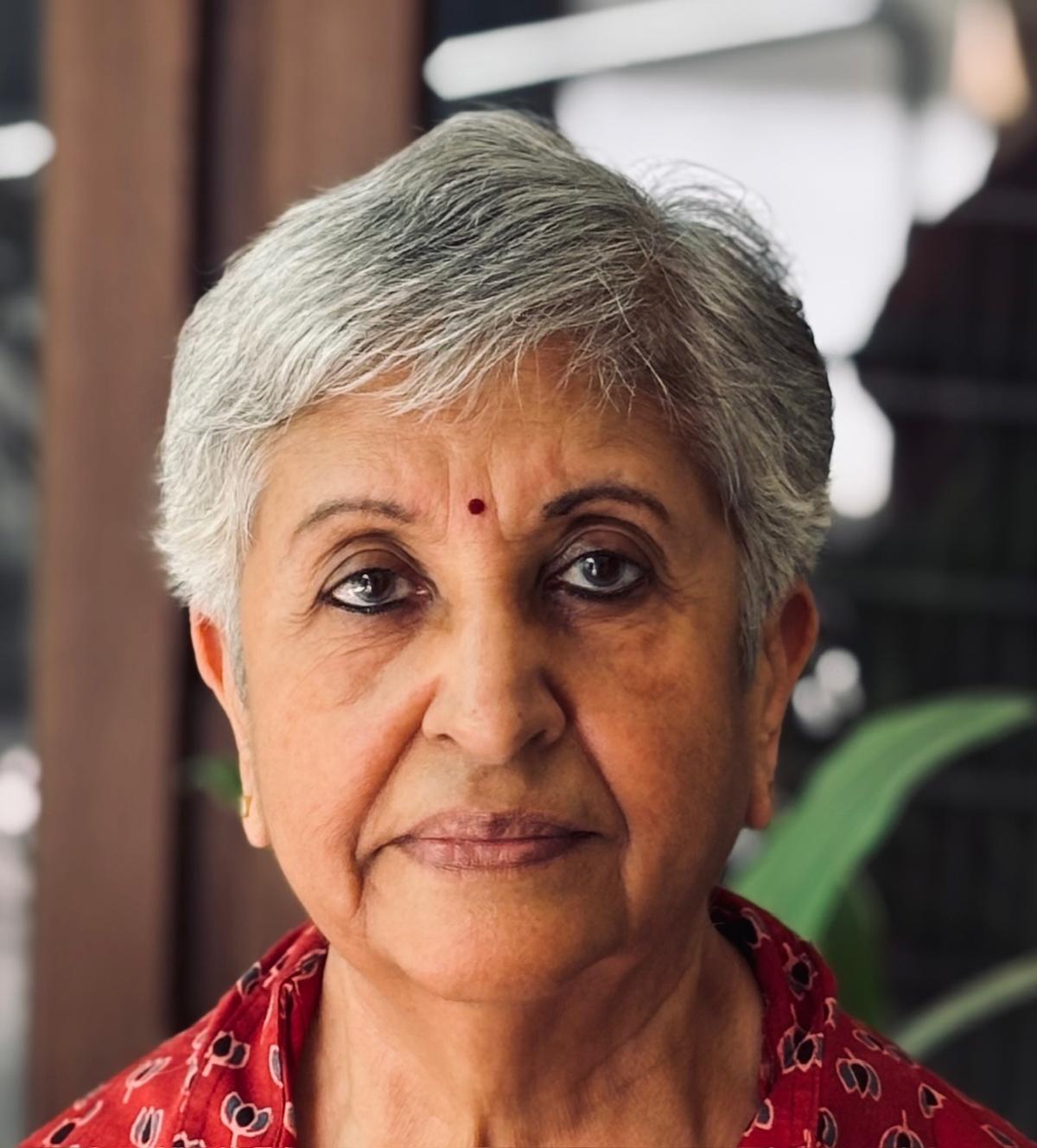
In an effort to connect better with younger, more sustainability-conscious audiences, Shankaran states that they plan to launch digital campaigns, collaborations, and experiential events on khadi. “We want to shift the perception of khadi, not only as an eco-conscious fabric but also as climate-friendly wear,” he says.
At Gandhigram Trust
Expanding the weaving community
The focus at Gandhigram Trust will continue to be on their textile experiments — weaving techniques, dyeing processes, fabric blends — to make khadi more adaptable to contemporary fashion needs. “We are extensively working with natural dyes and expanding our palette to include a wide range of plant-sourced colours. Eco prints have been our most recent exploration, especially using locally available flora such as marigolds, cosmos, guava leaves, and teak leaves. We are also sourcing handspun slub yarn from Maharashtra to experiment with different textures, and exploring different weave structures including combinations with naturally dyed indigo denim and wool.”
Shibu Shankaran
Going forward, Shankaran states they will look into ways to expand the weaving community “by training people from outside traditional weaving families, including middle-aged women and others interested in learning the craft”. This will not only help sustain khadi, but also open up new avenues for livelihood and inclusion.
The new collection will launch on October 8 at the Kaveri store, Chennai.
Published – October 03, 2025 11:20 am IST








